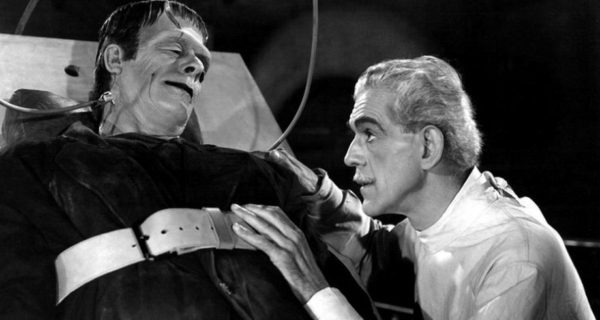In Mary Shelley’s classic novel, “Frankenstein: or the Modern Prometheus,” Victor Frankenstein wishes to create life using a sewn-up body made from pieces of corpses as the shell. Though Victor manages to actually bring it to life, it is considered a monster, and not how he wanted it to turn out at all. However, it can be argued that the real monster is not Frankenstein’s Monster, but Victor Frankenstein himself.
Victor Frankenstein can be viewed as a monster from his first encounter with the creature. After the creature comes to life, Victor can barely even look at it. Victor Frankenstein confirms this by saying,” I had desired it with an ardour that far exceeded moderation; but now that I had finished, the beauty of the dream vanished, and breathless horror and disgust filled my heart (Murry, 210).”
After all his work, he didn’t even greet his monster. Instead, he tells us, “His jaws opened, and he muttered some inarticulate sounds, while a grin wrinkled his cheeks. He might have spoken, but I did not hear; one hand was stretched out to detain me, but I escaped and rushed downstairs. I took refuge in the courtyard belonging to the house I inhabited, where I remained during the rest of the night (Murry, 211)…” Frankenstein said his creature had smiled, so one has to wonder if he really meant to harm him, or if he simply wanted to greet his maker. In fact, if Frankenstein had spent time nurturing his creature and teaching it right from wrong if it could’ve turned out differently. The creature may not have become brutal, if Frankenstein had raised it like a child instead of being a monster himself and abandoning it like he did.
Another event that makes Frankenstein the real monster is a lack of desire to keep the monster under control. When his best friend, Clerval, came to his college, Frankenstein wanted to hide the monster from him. However, other events occurred: ” I stepped fearfully in: the apartment was empty, and my bedroom was also freed from its hideous guest. I could hardly believe that so great a good fortune could have befallen me, but when I became assured that my enemy had indeed fled, I clapped my hands for joy and ran down to Clerval (Murry, 214).” However, Frankenstein has failed to think of the true danger that lies in letting the monster roam. Frankenstein is too selfish to think of the people the monster might harm out of pure anger, possibly stemming from the rejection from his maker. Frankenstein’s monster has escaped, and he is too selfish to realize that other people are in danger.
Lastly, Frankenstein is a monster because of his refusal to expose his monster to the public. After Frankenstein hears his younger brother has been murdered, he suspects the monster as the culprit, but he doesn’t tell anyone. In the meantime, his adopted sister, Justine Moritz, is accused of the crime. Though she faces death, Frankenstein still doesn’t tell anyone, as he says, ” My tale was not one to announce publicly; it’s astounding horror would be looked upon as madness by the vulgar (Murry, 232).” Frankenstein doesn’t feel anyone would believe him, so he doesn’t tell the court of his monster, relying on the hope that they will find evidence to prove Justine is not guilty of such a terrible crime. Though he tried to appeal to them, he never told of the monster, and Chapter 8 ends with Justine’s death (Murry, 240-241). Had he overcome his fear and pride, Justine would have a better chance at life.
Frankenstein is the real monster because he is filled with too much pride and selfishness to think of what impact his decisions have on others. Instead of being responsible for the monster, he basically isolates all his relations to his experiment, and people die because of his stupidity. Frankenstein needs to think of others before he rashly jumps into things.
~
Works Cited
Murry, Gregory. Western Imagination: Custom Reader. Hanover: Invino Academic Publishing, 2015. Print.

